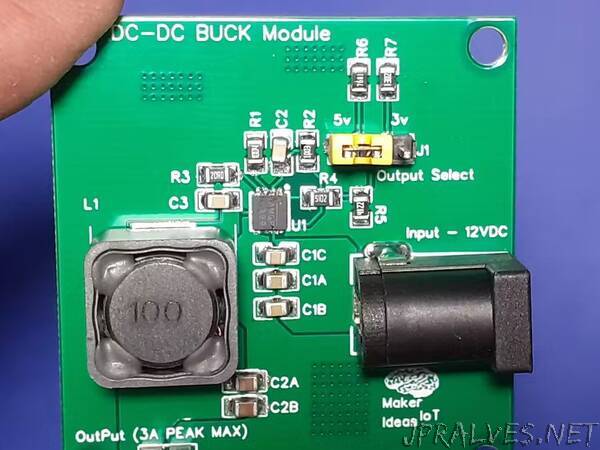
“A show and tell of designing and building my own dc-dc buck converter module.
Dc-to-DC Back converters have a lot of advantages over traditional linear voltage regulator solutions. Most of these advantages are related to the smaller size of these circuits, in comparison to their linear counterparts, as well as their higher efficiency and lower power consumption to name a few.
I am by no means a power supply guy, and as such, I usually buy my power supply modules. The same also applies to boost and buck converters. I am usually quite comfortable leaving the design of these critical parts to those who actually know what they are doing.
It thus seemed like a reasonable challenge to actually try and design and build one by myself, and that will be the story behind this post.
Finding a suitable driver IC
This journey started at a very strange place. When I decided to go ahead and build this Buck converter module, I had no specific driver IC in mind. I was thus browsing through the long list of dc-to-dc- buck converters on my component suppliers’ website, randomly pulling up a datasheet to take a closer look, mainly looking for something with as few external components as possible, while also having a decent current supply capability, as well as being able to operate on an input supply of 4v to about 24v, which is well within my usual range…
I eventually settled on the MPS MP9943. Definitely not the cheapest but still affordable, and in a QFN8 package, so that I am still able to actually solder it to a PCB!
-Wide 4V to 36V Continuous Operating InputRange-85mΩ/55mΩ Low RDS(ON) Internal PowerMOSFETs-High-Efficiency Synchronous Mode Operation-410kHz Switching Frequency-Synchronizes from 200kHz to 2.2MHz-External Clock-High Duty Cycle for Automotive Cold-crank-Internal Power-Save Mode-Internal Soft-Start-Power Good Indicator-Over Current Protection and Hiccup-Thermal Shutdown-Output Adjustable from 0.8V-Available in an QFN-8 (3mmx3mm)package
and with a peak current supply of up to 3A – Not too bad at all.”
